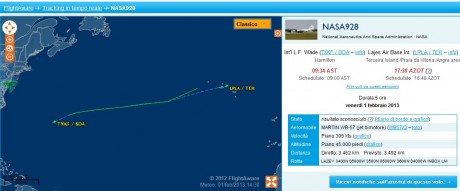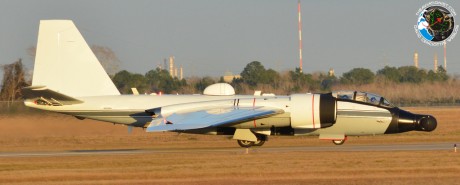At the end of last year, we reported about the return of a NASA WB-57 Canberra from operations in Afghanistan, where the civil-registered plane act as Battlefield Airborne Communications Node (BACN).
BACN is technological “gateway” system that, acting as a sort-of middleware, interconnects different radio systems and datalinks and makes them able to transfer information and communicate.
See original post at The Aviationist.
The WB-57 bridges the gap between different kinetic platforms, such as U.S. Navy F/A-18s and USAF B-52 or B-1 bombers that are equipped with incompatible systems. Needless to say, its capability to link ground patrols, Forward Air Controllers (FACs)/Joint Terminal Attack Controllers and planes providing Close Air Support, is particularly important in Afghanistan, a theater where Line Of Sight communication can not always be established among the interested parties.
Consequently, WB-57s are frequently deployed in Asia.
Image may be NSFW.
Clik here to view.
Image may be NSFW.
Clik here to view.
One of them, NASA 928, flew there via Bermuda, Lajes and RAF Mildenhall last week. Its ferry flight could be easily tracked on Flight Aware, as the following screenshot shows.
Image may be NSFW.
Clik here to view.
The following picture show the WB-57 conducting final preps prior to the Afghan deployment. The ball turret system mounted on the nose houses houses an optical bench, providing installation of both HDTV and infrared cameras. According to the NASA website, optics consist of an 11-inch-diameter, 4.2 meter fixed-focal-length lens. The system can be operated in both auto track and manual modes.
Image may be NSFW.
Clik here to view.
A 32-inch-ball turret system was part of the WB-57 Ascent Video Experiment (WAVE) that enabled better observation of the Space Shuttle on days of heavier cloud cover.
Read more at The Aviationist >
SEE ALSO: How Israel's Iron Dome really works >
SEE ALSO: The 18 things Navy SEALs never leave home without >
SEE ALSO: The 18 things Navy SEALs never leave home without >
Please follow Military & Defense on Twitter and Facebook.
